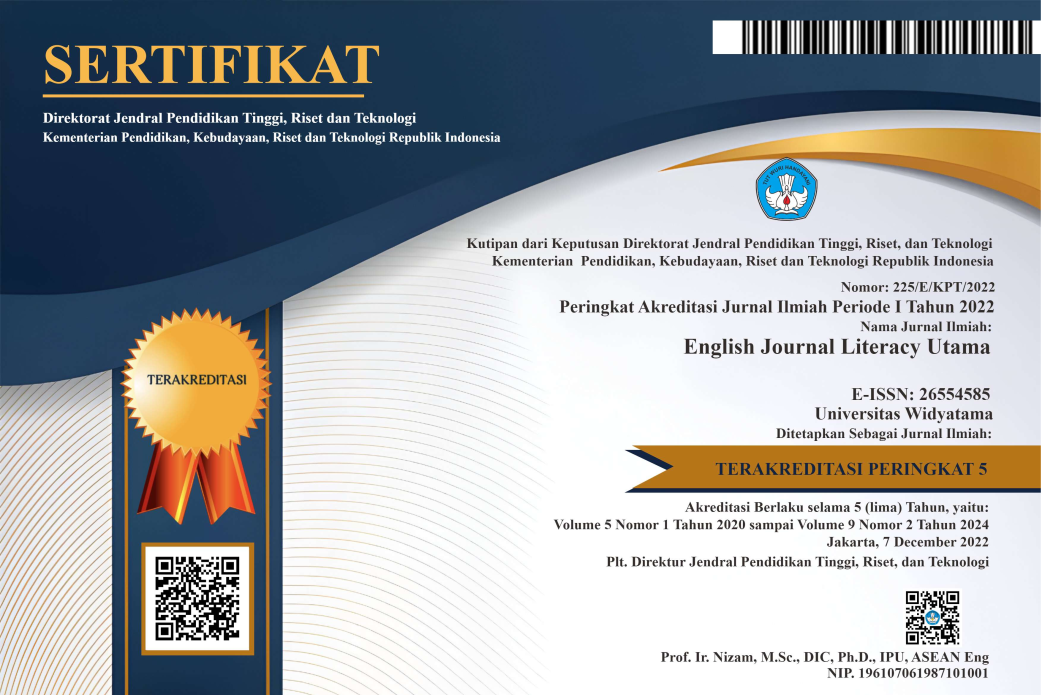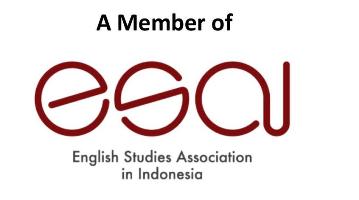DESIGNING WEB-BASED LEARNING TO ENHANCE STUDENTS' HIGHER ORDER THINKING SKILLS (HOTS)
DOI:
https://doi.org/10.33197/ejlutama.v8i2.252Keywords:
web-side, learning media, higher order thinking skills, reading for academic purposesAbstract
The application of e-learning as a form of cyber teaching in learning practices is regarded as no longer a new term, however, it has become a strong demand for learning practitioners to result a competitive output. The research was focused on the enhancing students’ reading skill in the level of higher order thiking skills through exploring in depth the implementation of website-based learning media in literacy-based courses considered as one of the courses required to apply internet and information-based technology, provide a more interesting and broad experience with an easily accessible media, and fun learning material and practices. The activities of designing and formulating web-based media learning process of Reading for Academic Purposes course in one private university were explored as the main data of the research. The finds indicated that five main phases in designing and formulating the web-based learning media in Reading for Academic Purposes course had to be developed. Student learning activities for higher order thinking skills were emphasized on the learning activities at the level of analyzing, evaluating, and creating with the context of applying case studies in the daily life. Developing critical questions in reading response activities, then were developed to create students’ critical thinking skills. Web-based learning media got the positive response from the students. Seen from the terms of responses of Perceived Usefulness, Perceived Ease of Use, and attitude.
References
Ariyana, Y., Pudjiastuti, A., Bestary, R., & Zamroni, Z. (2018). Buku pegangan pembelajaran berorientasi pada keterampilan berpikir tingkat tinggi: prigram peningkatan kompetensi pembelajaran berbasis zonasi.
Browne, M. N., & Keeley, S. M. (2007). Asking the right questions: A guide to critical thinking. Pearson Education.
Cresswell, J. W. (2015). Educational research: Planning, conducting, and evaluating quantitative and qualitative research. Pearson.
Davis, F. D. (1989). Technology acceptance model: TAM. Al-Suqri, MN, Al-Aufi, AS: Information Seeking Behavior and Technology Adoption, 205–219.
Hendi, A., Caswita, C., & Haenilah, E. Y. (2020). Pengembangan Media Pembelajaran Interaktif Berbasis Strategi Metakognitif untuk Meningkatkan Kemampuan Berpikir Kritis siswa. Jurnal Cendekia: Jurnal Pendidikan Matematika, 4(2), 823–834.
Krathwohl, D. R. (2002). A revision of Bloom’s taxonomy: An overview. Theory into Practice.
Rusman. (2011). Model-Model Pembelajaran Mengembangkan Profesionalisme Guru.
Saputra, H. (2016). Pengembangan mutu pendidikan menuju era global: Penguatan mutu pembelajaran dengan penerapan hots (high order thinking skills).
Shafrillia, S. U., Dewi, H. I., & Zulfitria, Z. (2022). Pengaruh Penggunaan Media Pembelajaran Dengan Motivasi Belajar Siswa Kelas I Di Sdn Rawa Badak Selatan 03 Pagi Dimasa Pandemi. Instruksional, 4(1).
Umam, K. (2018). Pengaruh media picture story terhadap kemampuan berpikir kritis siswa pada materi biologi. Proceeding Biology Education Conference: Biology, Science, Enviromental, and Learning, 15(1), 111–115.
Widodo, T., & Kandarwati, S. (2013). Higher order thinking berbasis pemecahan masalah untuk meningkatkan hasil belajar berorientasi pembentukan karakter siswa.
Yanuschik, O. V., Pakhomova, E. G., & Batbold, K. (2015). E-learning as a Way to Improve the Quality of Educational for International Students. Procedia-Social and Behavioral Sciences, 215, 147–155.
Downloads
Published
Issue
Section
License
Copyright (c) 2024 Sri Handayani, Nana Suryana, Cindy Sri Meidina Adeliani

This work is licensed under a Creative Commons Attribution-NonCommercial-ShareAlike 4.0 International License.
Creative Commons Attribution-ShareAlike 4.0 International License















